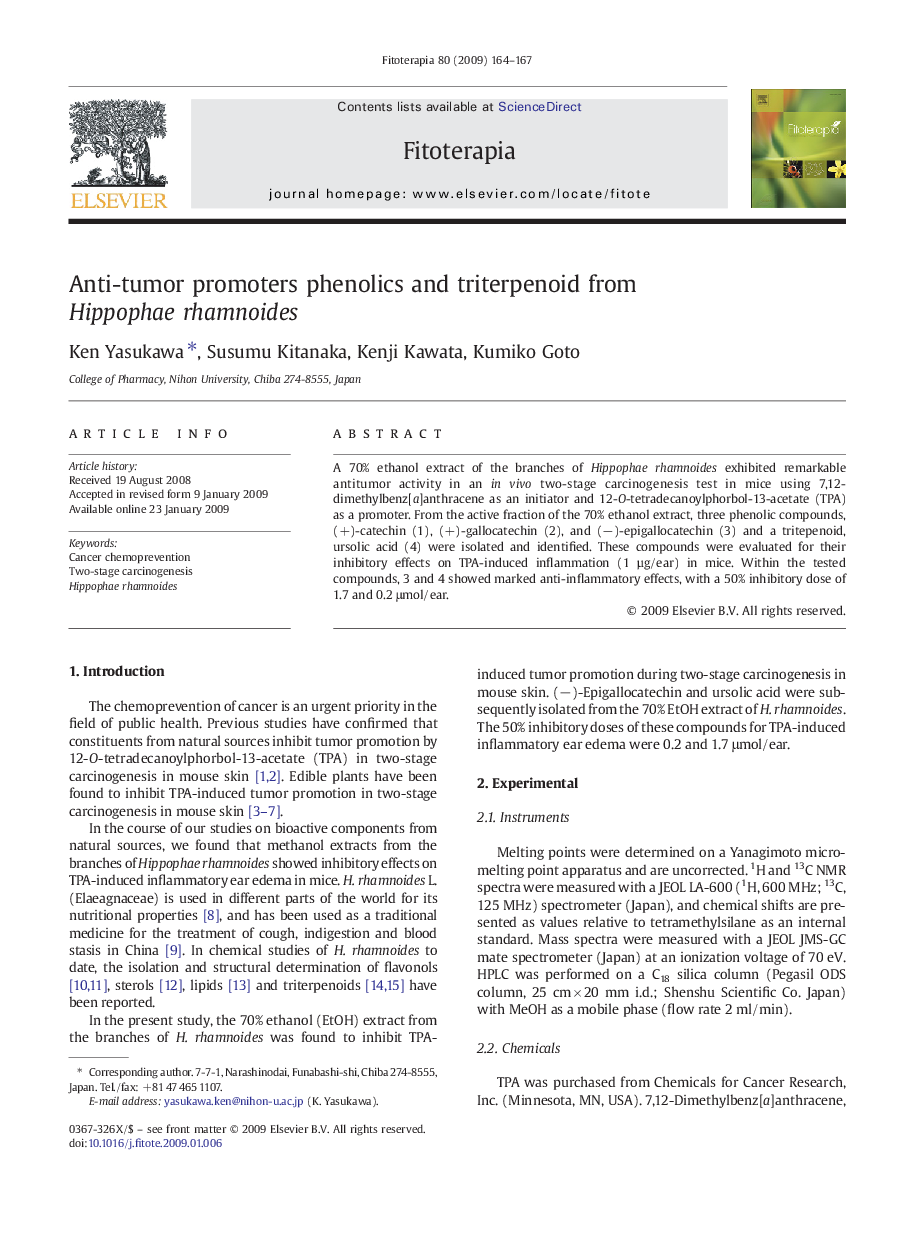| Article ID | Journal | Published Year | Pages | File Type |
|---|---|---|---|---|
| 2539684 | Fitoterapia | 2009 | 4 Pages |
A 70% ethanol extract of the branches of Hippophae rhamnoides exhibited remarkable antitumor activity in an in vivo two-stage carcinogenesis test in mice using 7,12-dimethylbenz[a]anthracene as an initiator and 12-O-tetradecanoylphorbol-13-acetate (TPA) as a promoter. From the active fraction of the 70% ethanol extract, three phenolic compounds, (+)-catechin (1), (+)-gallocatechin (2), and (−)-epigallocatechin (3) and a tritepenoid, ursolic acid (4) were isolated and identified. These compounds were evaluated for their inhibitory effects on TPA-induced inflammation (1 µg/ear) in mice. Within the tested compounds, 3 and 4 showed marked anti-inflammatory effects, with a 50% inhibitory dose of 1.7 and 0.2 μmol/ear.
Graphical abstractA 70% ethanol extract from the branches of Hippophae rhamnoides exhibited remarkable antitumor activity in an in vivo two-stage carcinogenesis test in mice using DMBA as an initiator and TPA as a promoter. From the active fraction of the extract, three phenolics (1–3), and ursolic acid (4) were isolated and identified.Figure optionsDownload full-size imageDownload as PowerPoint slide
